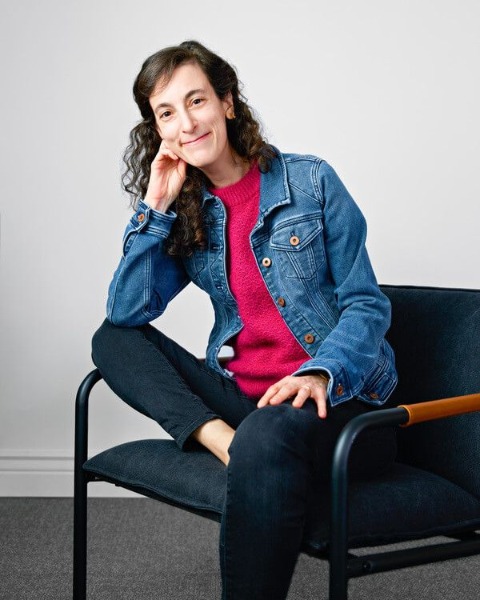Track 1/Volet 1
CS1.2: Layers and Legacy: the Opportunities and Challenges of Finish Conservation
-

Jessie Grebenc, M.Arch, CAHP (she/her/hers)
Senior Associate
ERA Architects Inc., Canada -

Bryan Green, Ph.D.
Visiting Associate Professor of Practice
School of Architecture, Virginia Tech -

Amanda Lewkowicz, AIA, LEED AP, SITES AP (she/her/hers)
Associate / Preservation Architect
Quinn Evans -

Annabelle Radcliffe-Trenner, RIBA, AIA, FAPT
Principal
Historic Building Architects LLC -
.jpg)
Qunxi Wang, Master in Science in Historic Preservation (she/her/hers)
Staff Designer
Quinn Evans
Session Chair(s)
Speaker(s)
This session has qualified for 1.5 LU|HSW Credits
The conservation of historic finishes requires a delicate balance between preservation and adaptation. This paper session will provide an exploration of philosophical and project-based approaches to finish conservation, challenging the conventional norms of historic preservation. This session highlights examples where the rehabilitation and interpretive needs of the building do not align with a strict adherence to more traditional conservation approaches. We will discuss the challenges and opportunities that arise when exercising professional judgment in the treatment of historical layers, and how these decisions can impact the conservation process.
Historic finishes are more than decorative elements; they are storytellers of the past, each layer representing a unique narrative. The papers presented will delve into the historical context for the various finish schemes; from a 218-year-old farmhouse to a 19th century City Hall to the buildings of the Postmodern-era. This session will touch upon the nuances in understanding and analyzing historic finishes within their original context versus present day, and the public perception of the “recognized narrative”. The session will also delve into the challenges of preserving Postmodern buildings, where entire assemblies often fail, and unit replacement is not possible. We will discuss the implications of this for traditional preservation practices with its focus on the principle of repair and replace in kind.
Presenters will discuss the idea of embracing multilayered approaches to conservation and how the complex question of “value” can be addressed through alternative approaches. In some cases, a multilayered approach will best respect the complexity of historical narratives and the diverse values they represent. In other cases, renewal and replacement of finishes will best serve the original design narrative. The session will also explore technical solutions for the removal of previous layers and incompatible coatings, and methods for preserving and replicating original historic finishes.
HSW Justification
This session focuses on HSW topics of Programming & Analysis, and Project Planning and Design, exploring the ethical, cultural and technical elements underpinning the assessment of the significance of layers of interior finishes, and investigative approaches to determine appropriate remedial treatments. The session also addresses the topic of Welfare, by elevating the human experience and broadening access to complex history in its discussion of the re-evaluation of the accepted standards for Heritage Professional Practice.
Learning Objectives:
- Recognize the importance of heritage value as it relates to the preservation and interpretation of several layers of historical finishes in various stages of decay and weathering.
- Discuss the paradox of preservation's focus on materials when dealing with postmodern architecture and consider a different approach to preservation.
- Identify compatibility issues associated with the historical use of water repellent treatments and be able to evaluate options for removal of incompatible treatments and the reapplication of compatible products.
- Describe the use of wood grain applications in the 19th century and be able to specify the method for replication of this finish.
Presentations:
-
10:30 AM - 10:50 AM EST(CS1.2) The Olson House: The challenges of preserving a living ruin depicted by Andrew Wyeth in Christina's World
Speaker: Annabelle C. Radcliffe-Trenner, RIBA, AIA, FAPT – Historic Building Architects LLC
Session Chair: Jessie Grebenc, M.Arch, CAHP (she/her/hers) – ERA Architects Inc.
-
10:50 AM - 11:10 AM EST(CS1.2) Preserving the Postmodern Past: Approaches to a Different Kind of Preservation
Speaker: Bryan C. Green, Ph.D. – School of Architecture, Virginia Tech
Session Chair: Jessie Grebenc, M.Arch, CAHP (she/her/hers) – ERA Architects Inc.
-
11:10 AM - 11:20 AM EST(CS1.2) Performance Evaluation of Chemical Poultice Removal of Silane & Siloxane Water-based Water-Repellent Treatments on Hand-Molded Bricks
Speaker: Qunxi Wang, Master in Science in Historic Preservation (she/her/hers) – Quinn Evans
Session Chair: Jessie Grebenc, M.Arch, CAHP (she/her/hers) – ERA Architects Inc.
-
11:20 AM - 11:40 AM EST(CS1.2) Research, Design, and Craftsmanship – Reviving the Atrium of Richmond’s Old City Hall
Speaker: Amanda R. Lewkowicz, AIA, LEED AP, SITES AP (she/her/hers) – Quinn Evans
Session Chair: Jessie Grebenc, M.Arch, CAHP (she/her/hers) – ERA Architects Inc.

.jpg)
.jpg)


